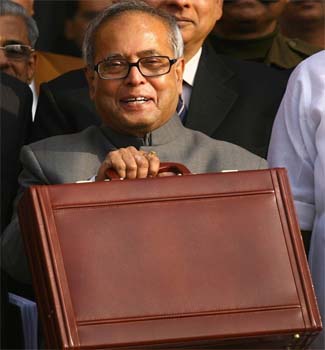
'Every time someone buys in a market, there is someone else on the other end who sells it. And the beauty is both think they make are making the right move in the market' - This is a famous ironic saying about the stock markets. 'Timing' in the market is something you would have to perfect and that comes with experience. So, when do you 'Buy' or 'Sell' in a stock market? There are people who have burnt their fingers pouring there entire savings into stock markets, pretty much like pouring the plastic currency into a full blown well. And everyone knows what would be the fate of your plastic currency.
We will look at a few examples to time the market.
1.If someone had invested in market in the early 2007, might have laughed all the way to bank with a 55% return on his investment in mid-2008. That is, his 100 rupee investment would have been all the way upto Rs.160.
2. If the same guy had invested the same amount in early 2008, he might have had a negative return on his investment of 40%. That is his 100 rupee investment would have come down to 60 rupees by the end of 2008.
So, its all about timimg the market, knowing the complete view of the stock you are about to buy and its perceived value in certain time frame and not to forget your own target towards your investment. Markets were just pummelled right from the start of 2011 and there is a general state of gloom in the market. Sensex and Nifty is down 13% for the YTD and many believe its a fair value now. But if its fair value, then the probability of 15 to 20% return this year is a tricky one.
Also, think about your equity(stocks and Mutual funds) exposure wi.h relation to your age. There is a belief that your equity exposure in your portfolio should be 100 - current age. So, if you are aged 40, your equity investments should be 60% in your investment portfolio.
On a macro-ecomonomic scale, India's fiscal deficit could be one of the biggest problem going forward this year. You just cannot run the government with debt and then hope for growth too. The reason is fiscal deficit is the percentage of the GDP which reflects government debt obligations. So, the government finances its needs with loans from the central bank. so, what happens is the private sector 'Crowding out' happens. That is, private sector capital needs for expansion will be possible only at a higher interests., as logically government would be preferred creditor to any banks, reason being their money is safe and repaying capacity is bright with the government.
So, unless the fiscal deficit is down, the private sector growth is always limited and this impacts the overall economic growth. So, economic growth being less, the company revenues is less and this in turn reflects in low profits for the companies. Obviously, low profits will conclude towards low share price in the markets. This is how fiscal deficit impacts growth.
Another side to it is the inflation. Higher inflation, leads margin pressures due to higer input costs and so the profits become lesser. So, bothe inflation and fiscal deficit greatly influences the market price. India's fiscal deficit this year could be arounf 4.5% and as you all know we have a sky-rocketing inflation (although early signs of tempering is on the anvil). So, that is the reason for the recent butchering in the dalal street in the last couple of months.
So, now that the stock markets have greatly corrected , this could be a best time to buy in the market. Sensex is expected to cross and close the year at around 21,500 and that translates to a double digit return from the market. And if you are not highely knowledgable in the market, you can take the Mutual fund root with Systematic Investment Plans.
So, invest in companies whose fundamentals are good and you the performance of the particular company. Otherwise the safe root is mutual funds. So, hapy investing in 2011 and this just could be right time to do it in 2011. And remember, you must have the final say in your investment and just nobody else, not even any third-party broker, as its your money that is being invested.














